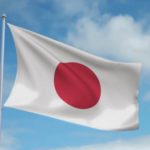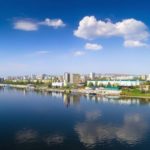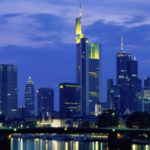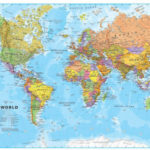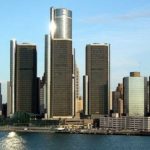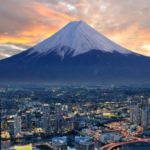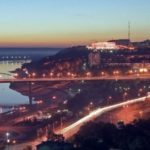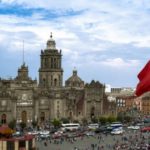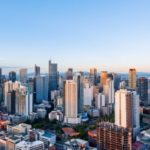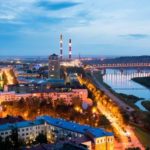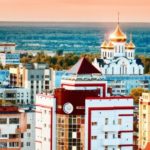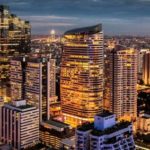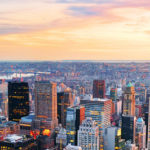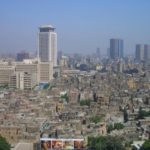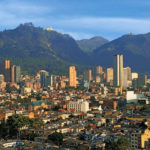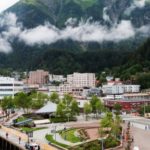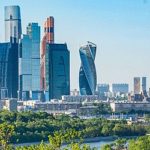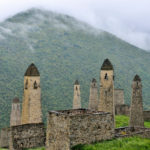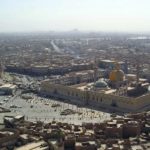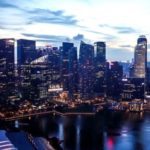Tokyo, The capital of Japan
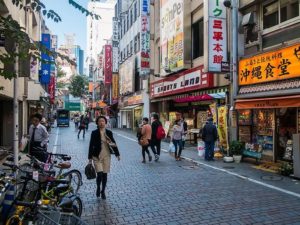 The capital of Japan, Tokyo, is considered the largest city in the world. It concentrates over 40% of the population of all of Japan. It is considered to be the only giant city in the world. And its population is constantly growing. The population density per 1 square. km average is 845-1000 people. According to forecasts of the Center for Urban Perspective Audit, conducted in 2007, Tokyo will continue to be the largest densely populated megalopolis in the world.
The capital of Japan, Tokyo, is considered the largest city in the world. It concentrates over 40% of the population of all of Japan. It is considered to be the only giant city in the world. And its population is constantly growing. The population density per 1 square. km average is 845-1000 people. According to forecasts of the Center for Urban Perspective Audit, conducted in 2007, Tokyo will continue to be the largest densely populated megalopolis in the world.
Tokyo prefecture includes 23 executive districts, 26 suburbs, 8 villages and 7 villages, the islands of Ogasawara and Izu, as well as on the Pacific coast of Honshu Island, Kanto plain. From photographs taken from space, it is clear that with Tokyo’s clear boundaries it’s impossible to decide, there’s also no way to see where the capital’s territory ends, and where the prefectures next door originate.
Industrial areas, transport infrastructure and residential areas of the capital have grown together in the largest conglomerate. Given the “residential areas” of Tokyo, which occupy the territories of Ibaraki, Kanagawa, Gumma, Saitam, Tochigi, Chiba and Yamanashi prefectures, the city is considered to be the largest metropolis in the world with a population of over 35 million people.
High-tech and knowledge-intensive industries received major development in Tokyo, since most of the large industrial enterprises are located outside the city. Compared to the rest of the world, Tokyo’s industrial production is incomparable. According to economic indicators and the size of GDP in terms of production, the capital of Japan is second only to Germany, the United States and Japan itself.
The Japanese capital is among the largest commercial centers in the world. The volumes of financial operations in Tokyo are comparable only with the volumes of the well-known stock exchanges in New York and London.
Tokyo is the largest transport center in Japan with two international airports. Freeways and lines, railways intersect each other. Overpasses with multi-tiered interchanges are laid through the city blocks. Tokyo is literally dotted with a network of extensive ground electric trains and subway lines.
Tokyo is also the transport and industrial center of Japan. The largest seaports accept numerous ships and coastal fishing vessels. They provide about half of Japan’s foreign trade.
Tokyo is among the most developed scientific and cultural centers of the world. For a long time in Tokyo, the oldest public and private universities in Japan. About dozens of historical museums and hundreds of art galleries are among the most important cultural centers of the world. The National Museum of Tokyo holds 85.5 thousand works of art.
Tokyo was twice turned into ruins almost to the ground. In 1923 due to the earthquake and in 1945 due to the bombing of American aircraft. Grown up skyscrapers of administrative buildings radically changed the modern look of the Japanese capital. These are buildings of large companies, luxury hotels and shops. One of the skyscrapers of the Japanese capital is the television tower. Its height is 333 meters. It houses the Wax Museum. But the tallest skyscraper in the city is the administration complex. Its height is 354 meters.

